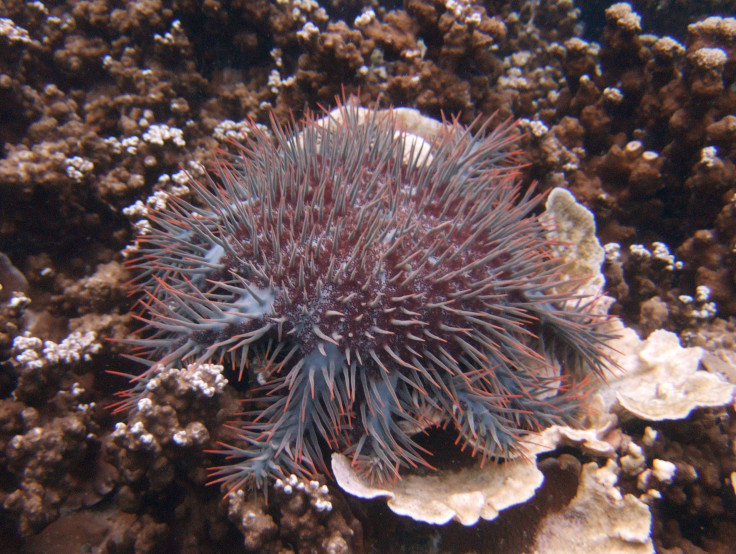Robotic killer on trials to clear Great Barrier Reef of crown-of-thorns starfish

An autonomous starfish-killing robot capable of administering a lethal injection is gearing for trial runs to clear the Great Barrier Reef of the invasive crown-of-thorns starfish, researchers say. The robot was designed to fight against the starfish that preys on corals and is responsible for destroying up to 40 percent of the reef.
The researchers from Queensland University of Technology developed the COTsbot, or the crown-of-thorns robot, with a sophisticated vision system to find and kill the starfish. The robot uses an extended arm to administer a fatal dose of bile salts to the spotted starfish, which will then allow the human divers to move in and mop up the remaining starfish.
The field trials have begun in Moreton Bay in Brisbane to enhance the robot’s navigation system. And the researchers said they were 99.99 percent confident in its accuracy.
“And if it has any doubt, it takes a photo and sends it back to us for confirmation,” said COTsbot designer Dr Matthew Dunbabin. However, no crown-of-thorns starfish were seen in the trial location in Moreton Bay, but after refining the navigation system, the robot will conduct the operation on the Great Barrier Reef.
"Later this month we begin deploying the robot in the Great Barrier Reef to evaluate our state-of-the-art vision-based crown-of-thorns starfish detection system," Dunbabin said. Over the next five months, the team plans to increase the level of autonomy of the robot which will allow autonomous detection and injection of the starfish.
The COTsbot is expected to work underwater for up to eight hours at a time, which will aid it to deliver more than 200 lethal shots to multiple starfish on the reef. The robot will work with its two “state-of-the-art” key components, the image recognition system and machine learning system.
The system has been designed to recognise COTS from among a vast range of corals using thousands of still images of the reef and videos taken by COTS-eradicating divers, according to Dunbabin. Since the 1960s, the growing number of starfish are negatively affecting the movement of nutrients from the land into the sea and destroying large areas of reef, the researchers said.
The COTsbot has already passed the initial six-month sea trial in Moreton Bay this week. For the next stage, the team aims to see how the navigation will work on strong water currents and more complex terrain in the open ocean. And the researchers hope for the robot to be fully operational on the reef early in 2016.
Contact the writer at feedback@ibtimes.com.au or tell us what you think below.




















